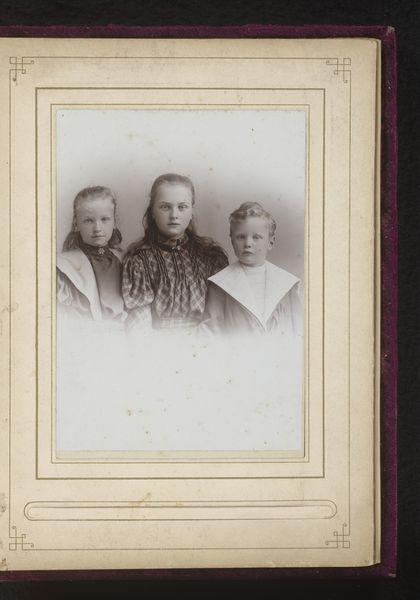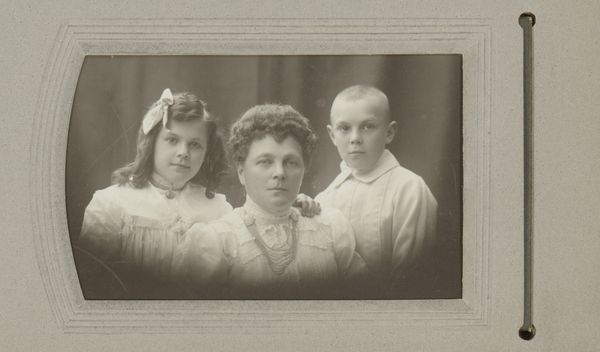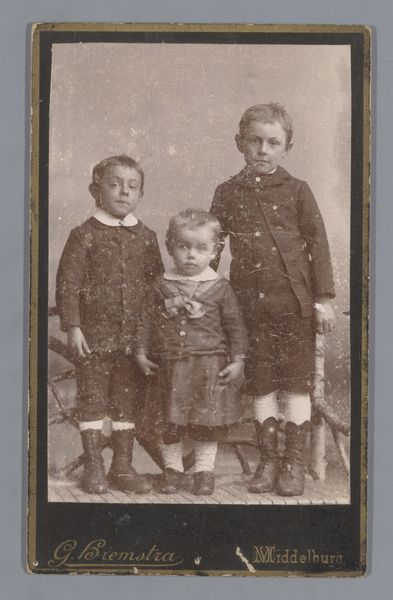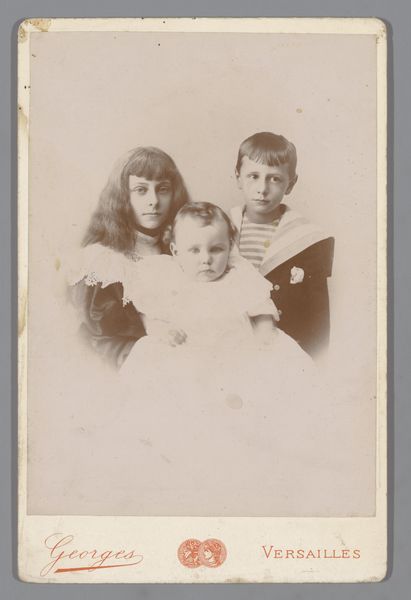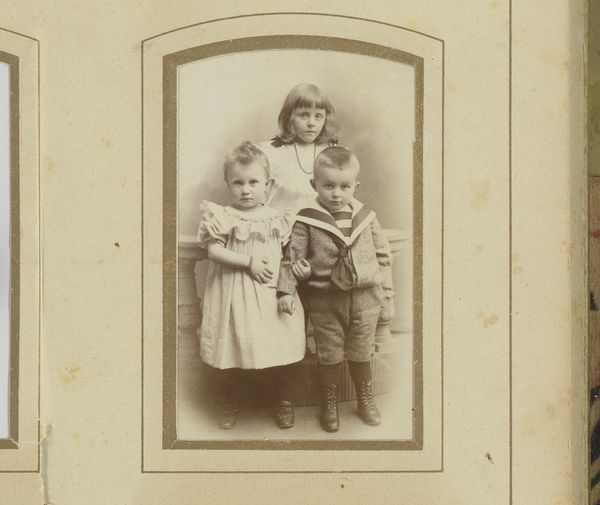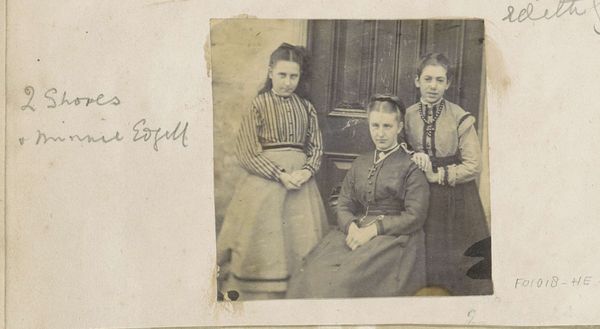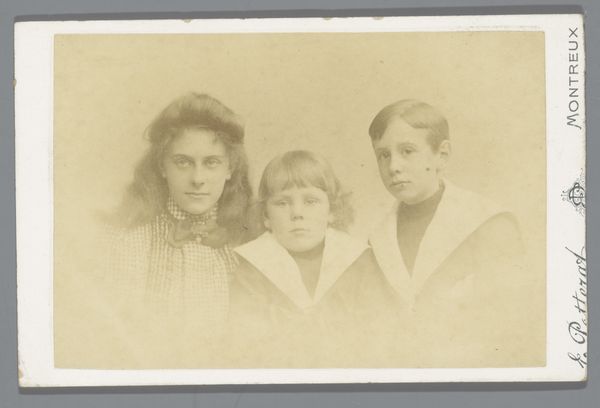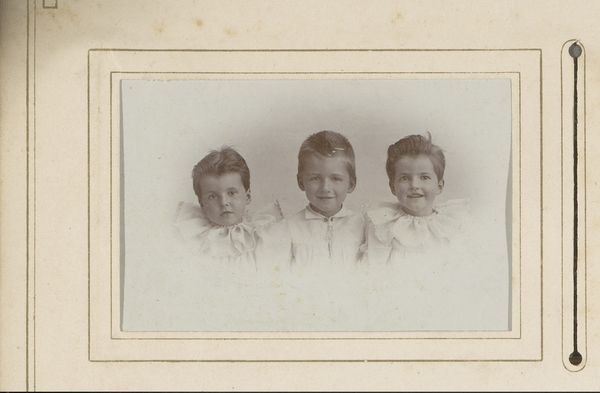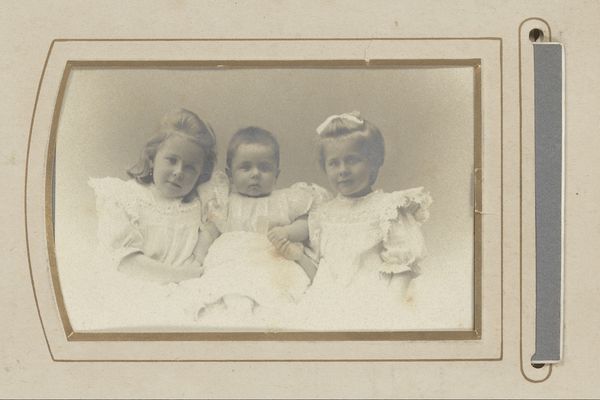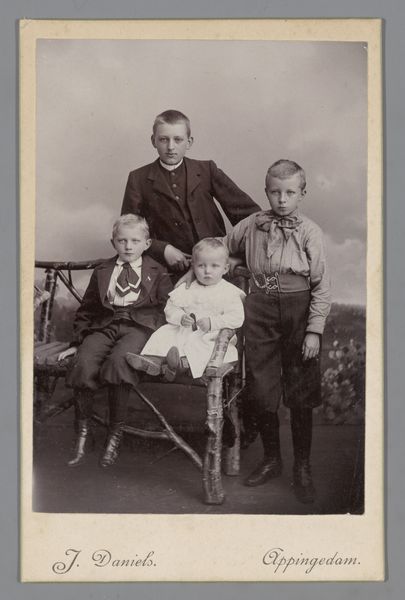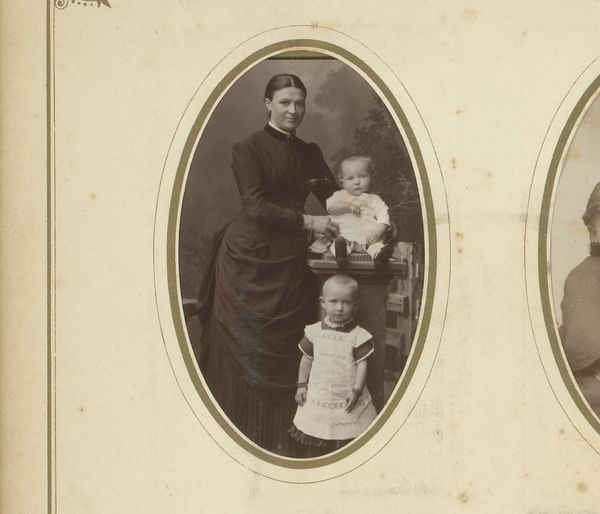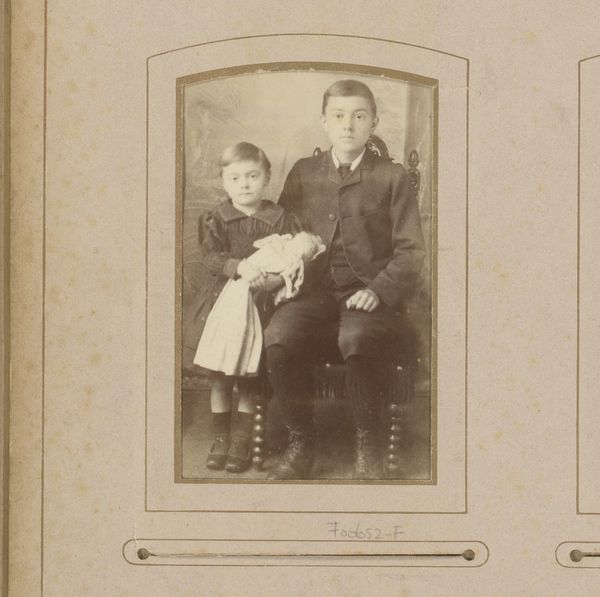
photography
#
portrait
#
photography
#
historical photography
#
group-portraits
Dimensions: height 82 mm, width 49 mm
Copyright: Rijks Museum: Open Domain
Curator: This is "Portret van een meisje en twee jongens," a photographic portrait by Otto Barkhausen, likely taken sometime between 1850 and 1900. Editor: It’s a striking image. Their solemn expressions are quite powerful and moving, creating an almost unsettling sense of maturity in such young faces. Curator: The clothing does speak to rigid social structures and codes. It seems important to reflect on gender roles and societal expectations placed upon these children during that era, particularly regarding performance and conduct within a family portrait. Editor: Exactly, and it’s difficult to disentangle the aesthetic of historical photography from the socio-political context. The careful composition speaks to the ritual and cost of portraiture at the time. Curator: Right, photographic portraits like this served as visual assertions of class and lineage, solidifying and perpetuating privilege, particularly for white families. Who had the means, who had the power to inscribe themselves into the visual record? Editor: I'm also drawn to the way the image invites assumptions about power dynamics within the family unit. The girl sits centrally with what seems like a position of power, and all three are situated around a book. Do we read literacy and knowledge as a reflection of status, of learning, of self-determination? Curator: That book becomes a symbol of so much—education, religion perhaps, and societal expectation, and also serves to enhance, even authorize, their position within society at large. A white, Western cultural history object. Editor: And even today, these historical artifacts can trigger a cascade of meaning, both conscious and unconscious, especially for those from marginalized communities who’ve been systematically excluded from such portrayals. Curator: Seeing this piece also drives home the point of considering what isn't captured and to understand that every artistic choice made reveals something. Editor: Precisely. It’s through this historical and societal framework that these century-old images transform from simple snapshots to reflections of complex and still-relevant issues of identity, representation, and power.
Comments
No comments
Be the first to comment and join the conversation on the ultimate creative platform.
